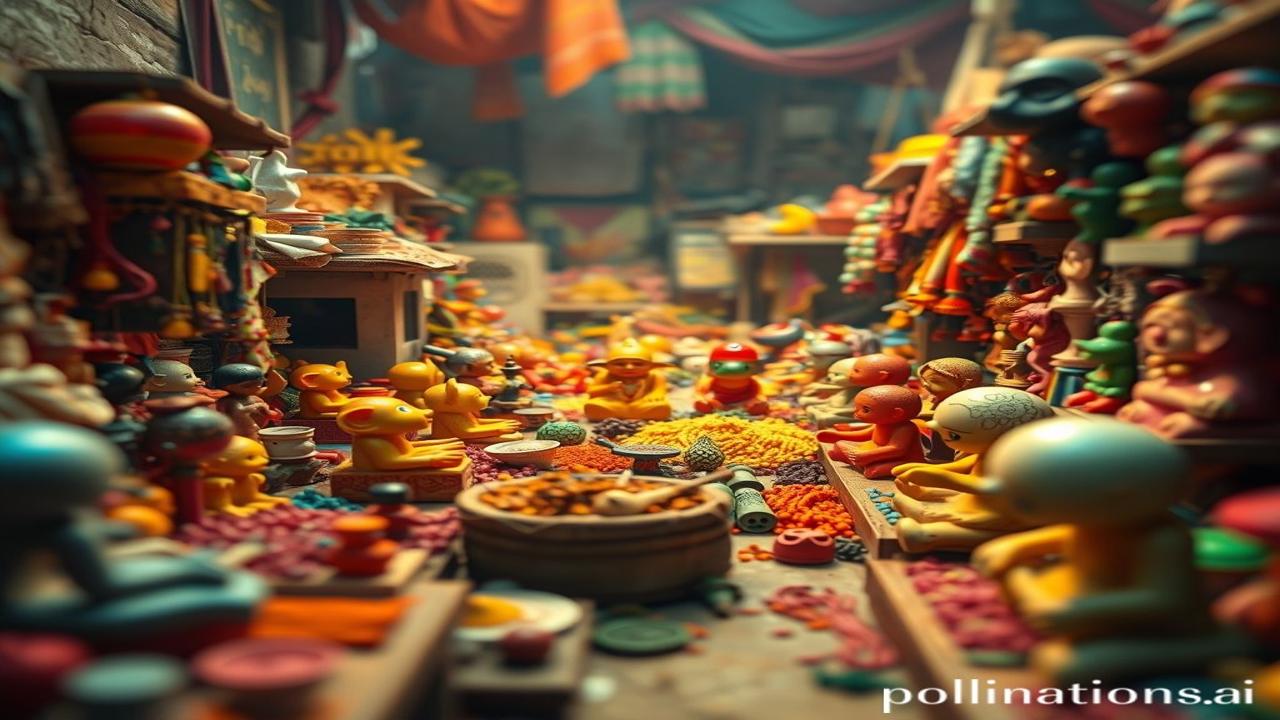Mitti Ki Khushboo, Bachpan Ki Yaad: Exploring India’s Traditional Toy Making Clusters
Kabhi socha hai, woh dhool bhari dopahar, jab dadi maa apne haathon se mitti ke khilone banati thi, unmein kitni kahaniyan chupi hoti thi? Kya woh sirf khilone the, ya hamare itihaas aur sanskriti ki ek chhoti si jhalak? Let’s dive deep into the vibrant world of India’s traditional toy making clusters, where art, heritage, and childhood memories intertwine.
Bharat Ki Khilona Kala: Ek Aitihasic Safar (India’s Toy Art: A Historical Journey)
What are these clusters? Think of them as mini-factories, humming with creativity, passed down through generations. These are areas where entire communities dedicate themselves to crafting toys using traditional methods and locally sourced materials. From the lacquerware toys of Channapatna in Karnataka to the wooden toys of Varanasi in Uttar Pradesh, these clusters are a living testament to India’s rich artistic heritage.
Yeh kahani shuru hoti hai sadiyon pehle. Imagine, the Mauryan Empire (322-185 BCE) – even then, clay toys and dolls were unearthed, showcasing an innate human desire for play and creativity. But the real boom came with the rise of local kingdoms and princely states. Each region developed its distinct style, reflecting the local culture, beliefs, and available resources. For example, the Kondapalli toys of Andhra Pradesh, known for their intricate detailing and religious themes, were patronized by the local Zamindars.
Why are these clusters so important? They’re not just about toys; they’re about preserving ancient crafts, providing livelihoods to rural communities, and most importantly, keeping our cultural heritage alive. In a world of mass-produced, plastic toys, these handcrafted treasures offer a connection to our roots, a tangible piece of Bharatiyata.
Zameeni Sach: Hunar, Hausle, Aur Kahaniyan (Ground Reality: Skill, Courage, and Stories)
Picture this: a small village in Rajasthan. The air is thick with the smell of lac, the vibrant hues of paint drying in the sun, and the rhythmic tapping of chisels against wood. You see families working together – grandfathers teaching grandsons, mothers guiding daughters. These artisans are not just skilled laborers; they are storytellers. Each toy they create carries a story, a piece of their life, their heritage.
“Beta, yeh ghoda nahin, yeh Rana Pratap ka Chetak hai,” an old artisan might say, meticulously carving the details. “Iske andar shakti hai, hausla hai, desh bhakti hai.”
Imagine Ma Rukmini, her hands stained with natural dyes, patiently painting the eyes of a Krishna doll. She knows each stroke is a prayer, a blessing for the child who will play with it. This isn’t just a profession; it’s a way of life, a sacred duty to preserve their ancestral art. They face challenges, haan bilkul, from dwindling markets to the allure of more profitable, modern jobs. But their dedication to their craft is unwavering.
Dharohar Aur Pehchan: Aaj Ka Bharat (Heritage and Identity: Today’s India)
Today, these toy making clusters face a critical juncture. Globalization and mass production pose significant threats. But there’s also a growing awareness and appreciation for handmade, sustainable products. We see their influence in:
- Festivals and Rituals: Many toys continue to be an integral part of religious ceremonies and festivals across India.
- Art and Design: The motifs and techniques of these toy makers are inspiring contemporary artists and designers.
- Education: Educators are recognizing the value of these toys in promoting creativity, problem-solving, and cultural understanding in children.
These toys are not relics of the past; they are living embodiments of our sanskruti, our identity as Indians. They remind us of our rich artistic heritage and the importance of preserving it for future generations.
Mazedaar Tathya: Dhool Mein Chupa Sach (Fun Facts: Truth Hidden in the Dust)
Myth Buster: Log samajhte hain ki these toys are only for children. Lekin asli sach yeh hai that many of these handcrafted pieces are highly collectible art objects, sought after by connoisseurs around the world.
Did you know? Some traditional Indian toys have been found to have origins dating back to the Indus Valley Civilization! That’s a legacy of over 5000 years!
Drishya Aur Bhavnayein: Jivan Ki Rangoli (Visuals and Emotions: A Rangoli of Life)
Imagine the scent of freshly cut wood mingling with the sweet fragrance of beeswax. Feel the smooth texture of lacquered toys in your hands, the rough surface of hand-carved wood. Hear the rhythmic clicking of bamboo looms, the cheerful chatter of artisans at work. The air is filled with laughter, music, and the palpable energy of creativity. These clusters are not just places; they are experiences that awaken the senses and nourish the soul.
Antim Vichar: Ek Kahani, Ek Sandesh (Final Thoughts: A Story, A Message)
“कला शाश्वती, जीवन क्षणभंगुर” (Kala shashwati, jeevan kshanbhangur) – Art is eternal, life is fleeting. Let us cherish and support these traditional toy making clusters, ensuring that the rich legacy of our ancestors continues to inspire and delight generations to come. Let’s choose handmade over mass-produced, stories over plastic, and Bharatiyata over everything else.
